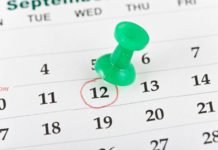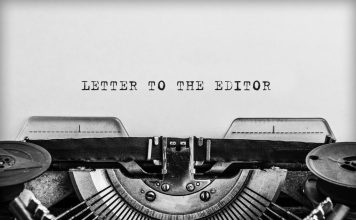So you’re jobless. Now what? It’s a situation
– whether by layoff or your own doing – that more and more
people are finding themselves in today.
FRESNO
So you’re jobless. Now what?
It’s a situation – whether by layoff or your own doing – that more and more people are finding themselves in today.
Career consultants say that as dire as prospects may appear, there are measures people can take to get ahead in their job search. And, conversely, there are definitely things they shouldn’t do.
Consultants don’t always agree – for instance, the question of whether resumes should be limited to one page inspires debate. But they are generally consistent.
Most say job seekers need some basics: an updated resume that is accessible and can be easily altered on a computer, appropriate interview attire. Candidates also should be well-versed in answering interview questions as well as prepared to ask a few of their own.
Marty Nemko, an Oakland-based career coach and contributing editor for career matters at U.S. News & World Report, said the biggest mistake people make is overselling themselves.
“Nobody likes to be sold. Cut out the BS,” he said. This goes for the resume and interview.
A job seeker shouldn’t say, “I’m uniquely qualified for the position,” Nemko said. “All that does to the reader is say that’s BS.”
Experts laid out a number of tips for those trying to beat the economic challenges and land a good job. There’s the all-important resume, which should contain active language and avoid cliches. The experts also offer advice on how to dress and act in the interview and what to do afterward. Finally, they urge job seekers to get out and mingle.
ONE PAGE OR TWO?
It’s the resume that initially represents a job seeker.
However, Nemko and Bernice Kao, job/career specialist with the Fresno County Public Library, disagree on the details.
Nemko said there is no one-page resume rule. If the resume warrants two pages, he said, it should be two pages. “You want to have as much in there as possible,” he said. “But have a brief summary at the top so they can be seduced by that, like a headline. But don’t pad it.”
Kao insisted a one-page resume is best.
“On average, human resources people have seven seconds to review a resume,” she said. They don’t want stapled pages, and, she said, resumes should be printed on white or off-white quality paper. Steer clear of bright colors.
Career advisers say each resume should be customized to fit the position and emphasize the exact skills that match the job. Check for typos and spelling as these little mistakes can cost you an interview.
LANGUAGE AND DATES
Career Web sites suggest dropping weak or passive language. Don’t say you were “responsible for generating sales and providing customer service.” Instead, state: “Generated sales and consistently met quarterly goals” and “provided exceptional customer service.”
Action words are best: generated, improved, created, led.
LinkedIn, an online network of more than 25 million business professionals from around the world, analyzed online profiles and resumes and found the most over-used and abused phrase: “proven track record.”
Opinions vary on whether to include graduation dates. For an older job seeker, including a graduation date could show a job seeker’s age and keep him or her from getting a job, said Penny Miranda, who works for the California Employment Development Department as coordinator of Central Valley Professionals, a Fresno-based networking club of business professionals looking for work.
Kao said it’s best not to date yourself on a resume.
Nemko disagreed. He said honesty is the best policy and employers don’t like being deceived.
“If it’s missing, it looks suspicious,” he said. He said including dates may work to a job seeker’s advantage. “There are some people who like older workers.”
Norman White, 51, of Sanger, Calif., may have to face those hurdles in his job search. He was laid off from his job with AutoZone earlier this year after a reorganization, and said it’s become increasingly difficult to even get his foot in the door for an interview.
Competition is intense and applications are more often taken online.
“You don’t go in and drop off an application and a resume anymore,” White said. That first impression is gone, and employers “miss a lot of good people.”
That’s why career consultants stress the importance of good resumes.
Don’t have a resume critiqued by friends or family, who are not likely to give an honest critique because they don’t want to cause hurt feelings.
Kao provides resume critiques as a free service at the downtown Fresno library and also conducts mock interviews with job seekers.
Cover letters are good and should be a quick summary about you and why you’re right for the job, advisers say. Make sure they are written on good quality paper.
THE INTERVIEW
Assuming your resume gets your foot in the door, the interview is the best chance to shine and convince the employer that you possess the skills to make the company grow.
During the interview, speak clearly. Ask questions when warranted. No hemming and hawing. No “ummms” or long pauses, Kao said. Avoid overuse of the word “like” – it sounds young and unprofessional.
It’s a good idea to bring a folder or portfolio to the interview for carrying additional information including reference lists – at least three professional contacts – and samples of work that might be requested. It’s not necessary to list references on the resume but have them easily available upon request.
Make sure references have been notified that they may be contacted, Kao said. You never want a reference to be blindsided and unprepared for the call, Kao said.
And, to ensure they are prepared to answer questions, it’s helpful to also supply references with a copy of your resume.
WHAT TO WEAR
Dress for the interview. But don’t overdress.
If the boss is dressed casually, but professional, “don’t come in a three-piece suit,” Nemko said. “The normal rule for the interview is you want to dress one notch above what you would wear for the job, not three notches.”
Research company culture first.
Kao said interview attire doesn’t need to be a suit. It can be just a simple white shirt or blouse and black skirt or slacks.
Appearance is everything. It’s a potential employer’s first look at a possible hire.
Piercings and tattoos can put people off.
Kao said piercings might be OK if a job seeker is looking for a job with a music company. “But, they have to go if you’re looking for a job with an international marketing company,” she said.
AFTER THE INTERVIEW
Follow-up calls are OK – to a point. One follow-up call if you haven’t heard anything in two weeks, “but not three,” Kao said.
Thank-you notes are a good idea, Kao and Nemko said.
“Just a plain old thank-you note card will not help you. A great thank-you letter, where you say what you really appreciated, is better,” Nemko said. The follow-up letter also is a second chance for you to clarify or expand on an interview question left not properly answered. “You could say, ‘I had further chance to reflect,'” he said.
And, if a job is offered, be gracious but not over-excited, Nemko said.
“People let their guard down when a job is offered to them,” he said. Society, in general, does not tolerate excess enthusiasm, “it seems out of control or desperate.” Look at 2004 presidential candidate Howard Dean and how his enthusiasm was taken as strange and put off many people, Nemko said.
GETTING OUT THERE
Maximize social networks. Kao, Nemko and Miranda all agree that networking can provide the best job leads.
Join LinkedIn. Create a Facebook page and profile. “It’s like an advertisement and a research tool,” Nemko said.
But be careful about what is posted online. More employers are searching the Internet to get to know job candidates.
“We don’t want to see a picture of you in a wet T-shirt contest drinking Jell-O shots,” Nemko said.
“Networking is big,” Miranda said. Go to “job fairs, chamber of commerce mixers, conferences, even churches.”
Miranda advised always having a job portfolio handy.















